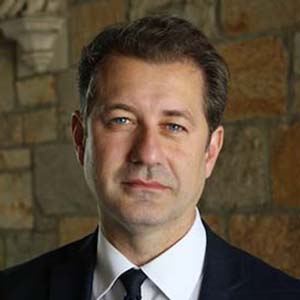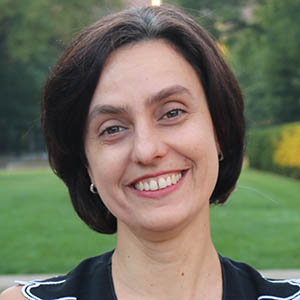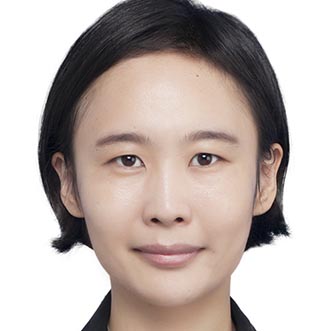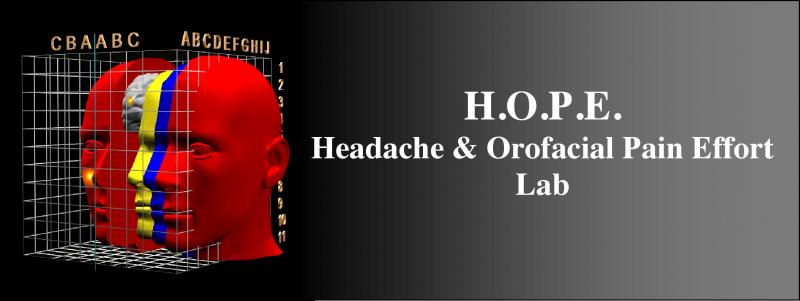Brain scans show dopamine levels fall during migraine attacks
March 29, 2017 | Michigan News
(Headache & Orofacial Pain Effort Lab)
Techno-innovations in pain research, therapeutics, and education.
Directed by Dr. Alexandre F. DaSilva, H.O.P.E. (Headache & Orofacial Pain Effort) is a multidisciplinary collaborative effort to investigate the brain as a research and therapeutic target for chronic trigeminal pain disorders, including primary headaches (e.g. migraine), TMJD and trigeminal neuropathic pain.
The fact that many therapeutic modalities for chronic pain, which focus on peripheral mechanisms, do not provide relief for treatment-resistant patients raises the possibility that the cause for the chronicity of these debilitating disorders may lie in the brain itself. One hypothesis is that functional and structural dysfunction of specific cortical areas (e.g. SI, DLPFC), even at molecular level (e.g. opioidergic and gabanergic mechanisms), may be responsible for the persistence and intensification of the pain suffering.
Together with collaborators from University of Michigan and other academic institutions, we use state-of-the-art neuroimaging techniques (fMRI, PET, MRS, DTI, and MRI-based morphometry) to study neuroplasticity, and to investigate novel therapeutic approaches and mechanisms (e.g. non-invasive brain stimulation) in chronic trigeminal pain disorders.

[email protected] | 734-615-3807 | Download CV
Dr. Alexandre DaSilva is an Associate Professor at the Biologic & Materials Sciences Department at the University of Michigan Dental School. He has received his Doctorate in Medical Science (DMSc) degree in Oral Biology with clinical training in trigeminal pain at Harvard University. His thesis subject was on somatotopic (fMRI) activation in the human trigeminal pain pathway. This training was followed by a post-doctoral fellowship on migraine neuroimaging at the Martinos Center for Biomedical Imaging, Massachusetts General Hospital, to investigate subcortical and cortical neuroplasticity in migraine patients. He was also an Instructor in the Psychiatric Department at Harvard University/McLean Hospital, as well as, an Assistant Clinical Investigator at the Forsyth Institute in Boston. During his training, he collaborated with his colleagues on innovative neuroimaging and non-invasive brain stimulation projects for chronic TMJD, trigeminal neuropathic pain and migraine.
He is currently the Director of H.O.P.E. (Headache & Orofacial Pain Effort), which is a multidisciplinary collaborative effort to investigate the brain as a research and therapeutic target for chronic trigeminal pain disorders. The fact that many therapeutic modalities for chronic pain, which focus on peripheral mechanisms, do not provide relief for treatment-resistant patients raises the possibility that the cause for the chronicity of these debilitating disorders may lie in the brain itself. One hypothesis is that functional and structural dysfunction of specific cortical areas (e.g. SI, DLPFC), even at a molecular level (e.g. opioidergic and gabanergic mechanisms), may be responsible for the persistence and intensification of the pain suffering. Together with collaborators from the University of Michigan and other academic institutions, we use state-of-the-art neuroimaging techniques (fMRI, PET, MRS, DTI, and MRI-based morphometry) to study neuroplasticity, and to investigate novel therapeutic approaches and mechanisms in chronic trigeminal pain disorders, including TMD the main focus.






Ifeyinwa Arinze
MFA Student, NYU Tisch School of the Arts
Conrad Chrabol, MD
Medical University of Warsaw
Misty DeBoer
Communications Coordinator - Institute for Central American Development Studies (ICADS) - Costa Rica
Isaac Dripps, PhD
Research Fellow
[email protected]
Xiaosu Hu, MSc, PhD
Assistant Research Scientist, Center for Human Growth and Development
[email protected]
Hassan Jassar, PhD
Research Fellow
[email protected]
Andrea Kadima
Chelsea Cummiford Kaplan, PhD
Research Investigator
[email protected]
Leen Khatib, DDS
Private practice
Nellie Kippley
Nephrology Physician Assistant
Michael Krivichkin
Sarah Lucas
Ilkka Martikainen, MD, PhD
University of Turku, Finland
Alexandra Martella, DDS, MS
Private practice
JJ Ubonwan Sae-Ung, DDS
Private practice
[email protected]
David Schwitzer, DDS
OMFS Resident, UT Southwestern
Rebecca Toback
Medical student, University of Michigan
Hendrik Van Holsbeeck, DDS
Private practice
Nathan Wigington, DDS
Private practice
March 29, 2017 | Michigan News
CBS News: Migraines prompt colorful tweets.
Plus coverage in: Metro, Slate, Financial Express, NBC, CBS, BBC, Scientific American Mind Magazine, Reuters, Forbes, Washington Post, The Guardian, The Telegraph, CBC, Medical News Today, Delhi Daily News, Free Press Journal, The News International, RedOrbit, Detroit Free Press, UPI, and others.
2010 Science News Magazine: “Why It’s So Hard to Tell Which Tooth Has the Ache” by Sarah Sanders.
2012 Science Daily: “Technology eases migraine pain in the deep brain”
2014 Los Angeles Times: “Tweeting a Killer Migraine in Real Time” by Mary MacVean
2014 USA Today: "Worst: Migraine sufferers share pain on Twitter” by Kim Painter
2014 WDIV, NBC TV Channel affiliate: “Live in the D: Inside U of M's 3D lab” by FrankMcGeorge
2014 Popular Mechanics: “Virtual Surgery: Training Med Students on a 3D Cadaver” by Charles Q. Choi
2014 WWJ Newsradio CBS radio affiliated: “Migraine twitter” by Sean Lee
2001 Globo Reporter (Brazil): “The Brain with Pain.”
2014 Journal da Band (Brazil): “3D Autopsy Helps Future Doctors”
